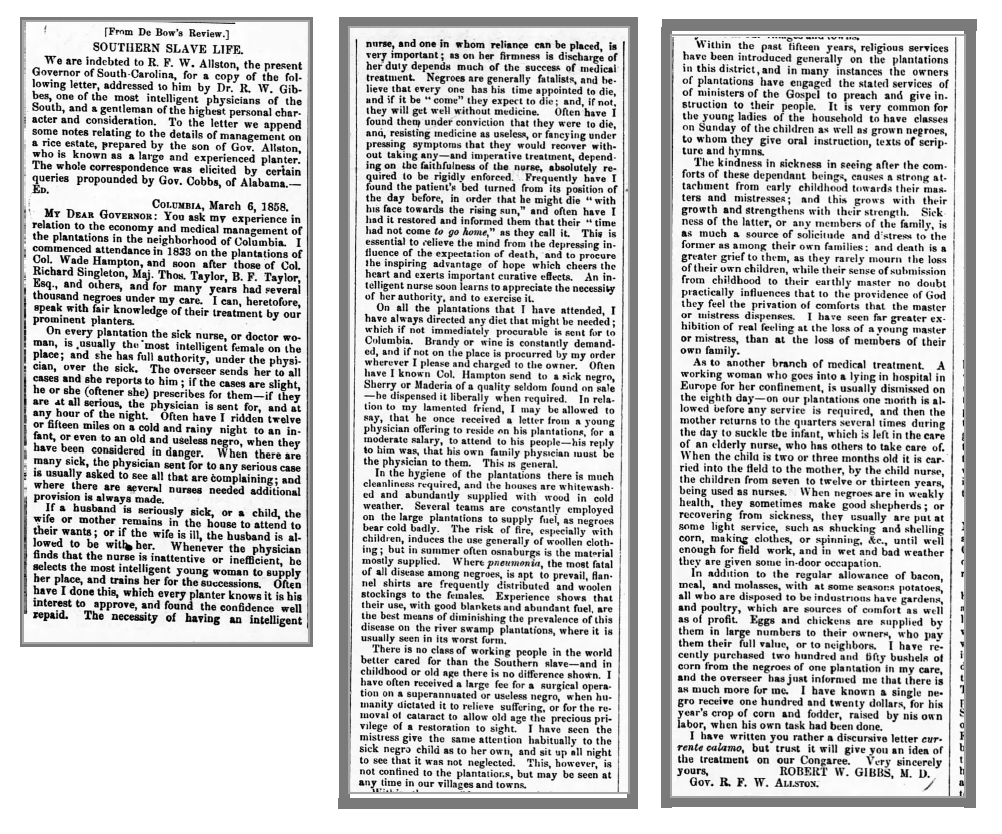The author of the letter (slave owner Robert W. Gibbs) is described in the newspaper article as “one of the most intelligent physicians of the South” and “a gentleman of the highest personal character and consideration.” In the actual letter Gibbs also establishes his own qualifications for speaking about the treatment of southern slaves by stating that he has “cared for” several thousands of slaves in his lifetime. The remainder of the letter consists of detailed explanations of medical care and resources made available to Gibbs’ slaves. Gibbs declares that “there is no class of working people in the world better cared for than the Southern slave.” He states that many medicines, as well as high quality Brandy or wine, are made available to sick slaves, and that the hygiene/cleanliness of plantation environments is held to a high standard. Then, other foods made available to slaves are listed, including: bacon, molasses, potatoes, poultry, and eggs. Gibbs also mentions that the most “industrious” slaves were allowed to have their own gardens and chickens to tend to, and were able to sell their crops/goods for their own profit. This letter was clearly written, and later published, to give the public a firsthand view of how southern slaves were treated. A diet consisting of chicken products, molasses, bacon, and wine is one that would be highly appreciated during the 19thcentury. Upon hearing that these are the types of food that slaves were eating, as well as the extensive medical care provided to slaves, a layman that was ignorant of southern slavery practices would certainly be swayed in favor of slavery. This is an example of the many ways in which word of mouth and early forms of media were used to spread false information to convince Americans to sit back and allow the continuation of slavery. This is relevant to our general understanding of Chapel Hill, as well as the foodways of the time, because it gives us a clear insight to what is claimedto be the diet and well-being of an average southern slave was in the mid 19th century.It also may have had a significant impact on keeping slavery practices in the American south. This in turn may have had a very wide impact on the foodways of the entire country, as plantations and other slave-owning businesses played vital roles in the production and circulation of food and food-related items in early America.
[1]“Robert Allston.” NNDB. 2014.
Ally Dombroski
References
- “Robert Allston.” NNDB. 2014. Accessed October 09, 2018. http://www.nndb.com/people/016/000117662/.
